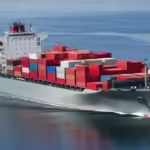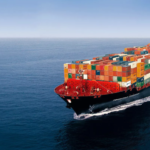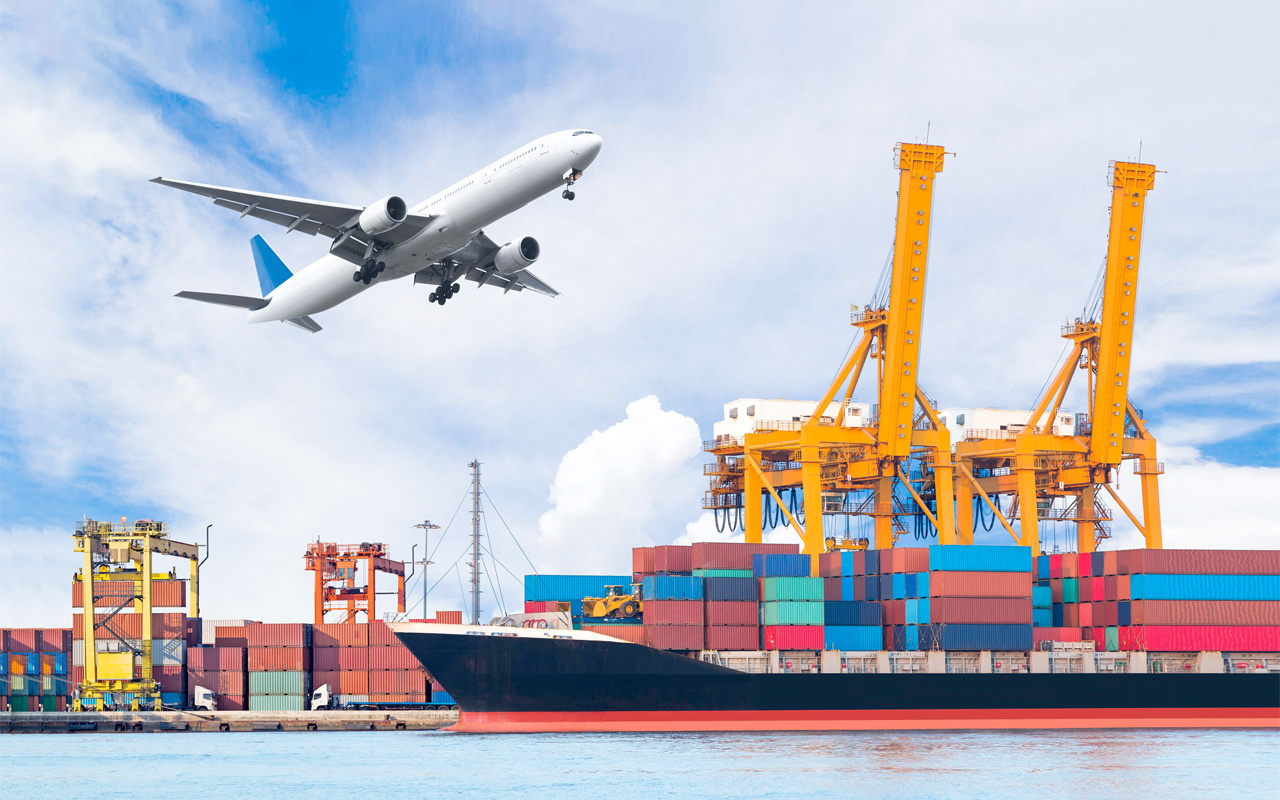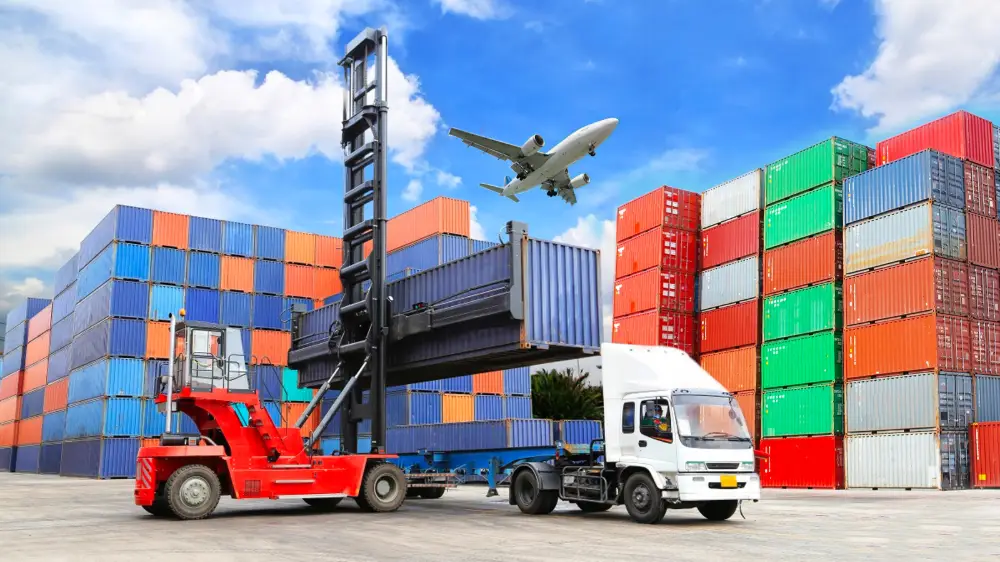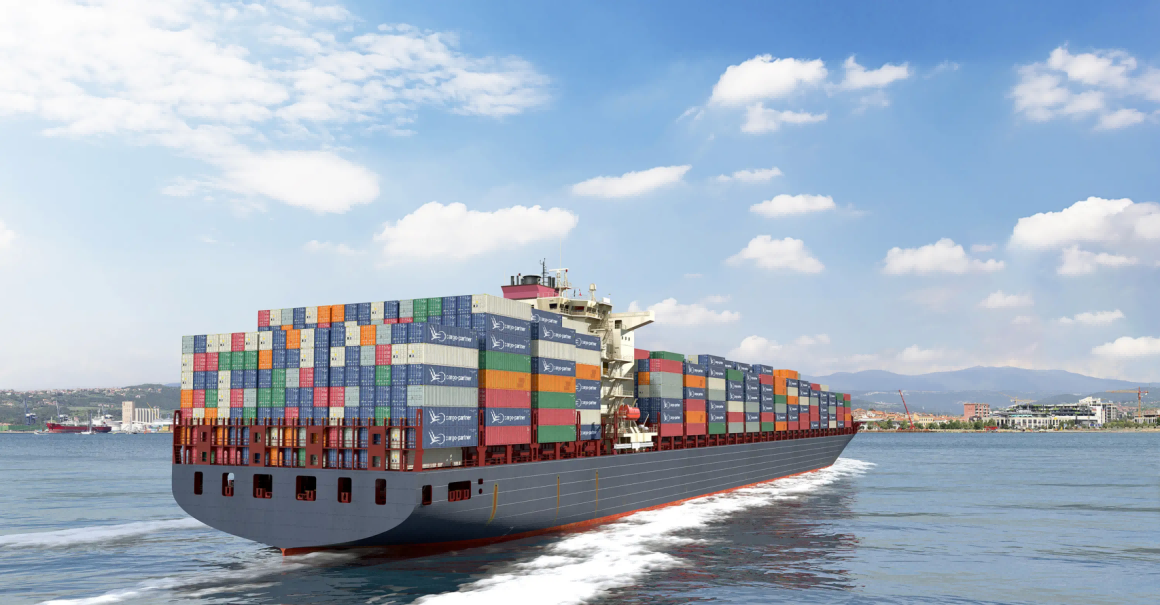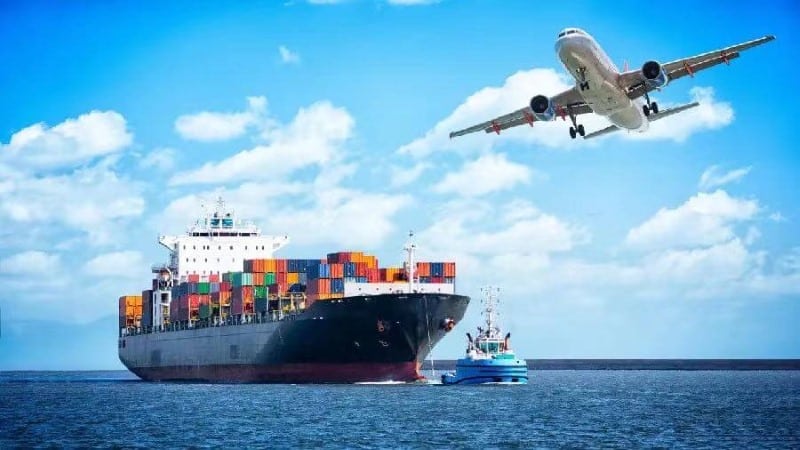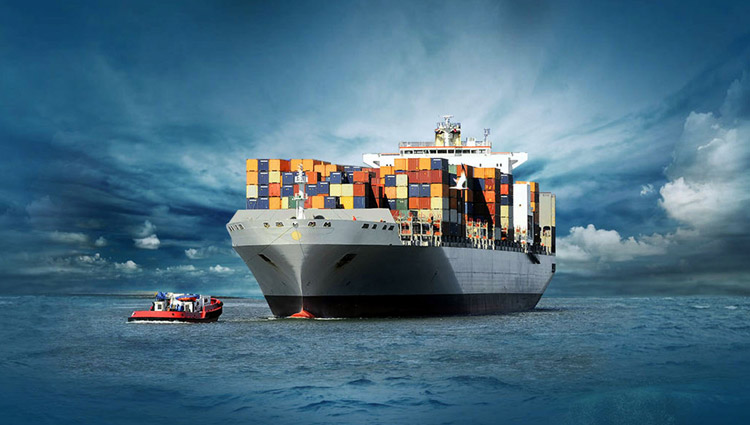Importing goods from China to Slovenia can be a complex process, but with the right knowledge and planning, it can also be a highly efficient and cost-effective venture. Sea freight, or ocean freight, is one of the most popular methods of transporting goods internationally, particularly for large shipments. This guide provides a comprehensive overview of the sea freight process, from understanding the benefits of shipping by sea to navigating customs clearance in Slovenia. By following these steps, importers can ensure a smooth logistics experience, maximize savings, and successfully bring their products from the bustling markets of China to the heart of Europe.
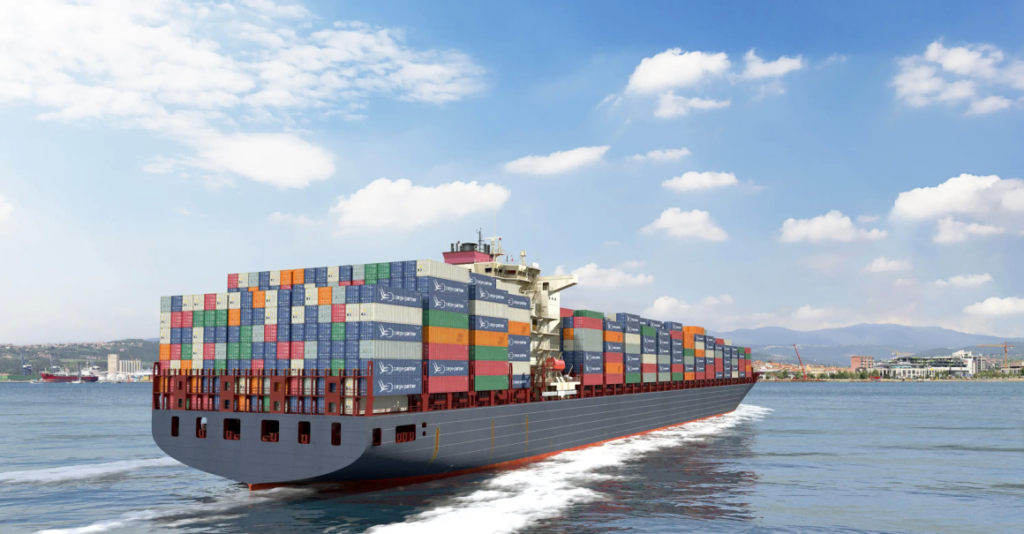
Table of Contents
Understanding Sea Freight
Sea Freight, also known as ocean freight, refers to the process of transporting goods via ships across oceans and seas. It is one of the most common and cost-effective methods for shipping large volumes of goods internationally. In the context of importing goods from China, choosing sea freight presents several advantages due to the vast network of shipping routes and infrastructure that connects China with countries around the world.
Choosing sea freight over other methods can be strategic for several reasons:
-
Cost-Efficiency: Compared to air freight, sea freight is significantly cheaper, especially for large shipments. The lower fuel costs for ships often translate to lower transportation costs for importers.
-
Capacity: Sea freight can accommodate a wide range of cargo, from oversized machinery to bulk commodities. This flexibility makes it an ideal option for businesses importing a variety of goods from China.
-
Eco-Friendly: Ships are generally more fuel-efficient per ton of cargo moved compared to planes, making sea freight a more environmentally friendly option for transporting goods.
-
Global Network: With a well-established global shipping network, sea freight vessels can reach ports in virtually every country, allowing importers in Slovenia to access a diverse range of Chinese products.
Benefits of Sea Freight for Importing Goods
Importing goods via sea freight offers numerous benefits:
| Benefit | Description |
|---|---|
| Cost Savings | Considerably lower costs per unit than air freight, particularly for heavy or bulky items. |
| Large Capacity | Ability to transport large quantities of goods, making it suitable for wholesale importers. |
| Variety of Goods | Suitable for a wide range of products, including hazardous and oversized items. |
| Reduced Risk of Damage | Goods are usually well-secured in containers, minimizing the risk of damage during transit. |
| Scheduled Shipping | Reliable schedules and availability of shipping services, making it easier for importers to plan. |
| Flexibility in Shipping Options | Multiple shipping options (FCL, LCL) provide flexibility based on the importer’s needs. |
Key Considerations for Shipping from China to Slovenia
When considering shipping goods from China to Slovenia, several key factors must be taken into account. These include the selection of shipping methods, routes, required documentation, and customs clearance processes.
Shipping Methods
There are primarily two methods of sea freight shipping:
-
Full Container Load (FCL): This method is ideal for importers who have enough cargo to fill an entire container. It is cost-effective for larger shipments and allows for better security of goods.
-
Less than Container Load (LCL): Suitable for smaller shipments that do not fill an entire container. This method allows multiple importers to share space, making it a cost-efficient option for those with smaller volumes.
Shipping Routes
The most common shipping routes from China to Slovenia typically pass through major ports before reaching their final destination:
| Port of Origin | Major Ports in Transit | Destination Port |
|---|---|---|
| Shanghai | Singapore, Rotterdam | Port of Koper |
| Shenzhen | Hamburg, Genoa | Port of Koper |
| Ningbo | Antwerp, Trieste | Port of Koper |
These routes are selected based on shipping lines’ schedules, cargo volume, and transit times. Importers should choose a route that aligns with their delivery timelines and cost considerations.
Required Documents
Shipping goods from China to Slovenia involves several essential documents that must be prepared to ensure compliance with both Chinese and Slovenian regulations:
-
Commercial Invoice: A document detailing the sale transaction between the buyer and seller, including price, description of goods, and payment terms.
-
Packing List: This document lists all the items in the shipment, detailing weight, dimensions, and packaging specifications.
-
Bill of Lading: A legal document issued by the shipping company, acknowledging the receipt of goods for transport.
-
Certificate of Origin: A document certifying the country where the goods were produced, which may be required for customs clearance.
-
Import License: Depending on the nature of the goods, an import license may be necessary to comply with Slovenian import regulations.
Customs Clearance
Successful customs clearance is critical to ensure that goods enter Slovenia without delays. Key points to consider include:
-
Tariffs and Duties: Understanding applicable import tariffs and duties on your goods is essential. Importers should check the latest rates applicable to their commodities.
-
Customs Broker: Engaging a professional customs broker can streamline the clearance process, ensuring that all documentation is correctly filed and obligations met.
-
Regulatory Compliance: Importers must be aware of Slovenian regulations regarding product safety, labeling, and other compliance requirements to avoid penalties.
For reliable and efficient logistics solutions, consider Dantful’s Door-to-Door Shipping services. Dantful International Logistics provides a comprehensive approach to manage your shipping needs from China to Slovenia, ensuring timely delivery and adherence to all customs regulations. With Dantful, you can take advantage of our expertise in Customs Clearance and tailored solutions for your import operations.
Read More:
- Shipping From China To Netherlands
- Shipping From China To Spain
- Shipping From China To Germany
- Shipping From China To France
- Shipping From China to Italy
- Shipping From China To Poland
- Shipping From China to United Kingdom
Major Ports for Sea Freight
Top Chinese Ports for Exporting to Slovenia
China boasts several major ports that play a crucial role in exporting goods globally, including to Slovenia. Here are some of the top ports:
| Port Name | Location | Key Features |
|---|---|---|
| Shanghai | Shanghai | Largest port in China, offering extensive shipping options and connections to Europe. |
| Shenzhen | Guangdong | Major hub for electronics and consumer goods, facilitating quick exports. |
| Ningbo | Zhejiang | Known for its efficient operations and large container handling capacity. |
| Guangzhou | Guangdong | Key port for a variety of goods, including textiles and machinery. |
| Xiamen | Fujian | Well-known for its fruit and agricultural exports, along with electronic components. |
These ports provide reliable shipping services and connections to various shipping routes, ensuring timely delivery of goods to Slovenia.
Key Slovenia Ports for Imports
Upon arrival, the following ports in Slovenia are pivotal for handling imports from China:
| Port Name | Location | Key Features |
|---|---|---|
| Port of Koper | Koper | The main port in Slovenia, it has deep-water berths and is well-equipped for container handling. |
| Port of Piran | Piran | Smaller port primarily for local goods, with limited capacity compared to Koper. |
| Port of Rijeka | Nearby Croatia | Often used by Slovenian importers for larger shipments, as it is one of the largest ports in the Adriatic Sea. |
The Port of Koper is the primary entry point for most imports, offering direct access to road and rail networks for inland distribution.
The Sea Freight Shipping Process Step-by-Step
Understanding the sea freight shipping process is vital for ensuring smooth logistics when importing goods from China to Slovenia. Here’s a detailed breakdown of the steps involved:
1. Obtaining a Freight Quote and Booking
-
Providing Shipment Details to the Freight Forwarder: Importers must furnish the freight forwarder with comprehensive information about the shipment, including the nature of the goods, dimensions, and weight. This data is critical for accurate quoting and planning.
-
Agreeing on Shipping Terms and Rates: Once the freight forwarder provides a quote, importers need to discuss and agree upon shipping terms (Incoterms) and rates. This might include considerations such as insurance, delivery times, and payment terms.
-
Confirming the Booking: After agreeing on terms, the booking needs to be confirmed. This typically involves signing a contract and paying a deposit.
2. Cargo Pick-up and Delivery to the Port
-
Arranging for Cargo Pick-up from the Supplier: The freight forwarder will coordinate the cargo pick-up from the supplier’s location in China. This step ensures that goods are collected efficiently and securely.
-
Transporting the Goods to the Port of Departure in China: The cargo is then transported to the selected port for export, ensuring adherence to timelines and minimizing delays.
3. Export Customs Clearance in China
-
Submitting Required Documents: The freight forwarder will handle the necessary documentation, including commercial invoices, packing lists, and certificates of origin, to facilitate customs clearance.
-
Paying Export Duties and Taxes: Any applicable export duties and taxes must be settled to comply with Chinese regulations before the cargo can leave the country.
4. Loading and Ocean Transportation
-
Loading the Cargo Onto the Vessel: Once customs clearance is complete, the cargo is loaded onto the vessel for transport. The freight forwarder ensures that all loading procedures are followed to protect the goods.
-
Transit Time from China to Slovenia: The typical transit time for sea freight from China to Slovenia can range from 25 to 40 days, depending on the shipping route and any transshipment points.
5. Import Customs Clearance in Slovenia
-
Submitting Import Documents: Upon arrival at the Port of Koper, the importer or customs broker must present required documents for customs clearance in Slovenia, ensuring compliance with local regulations.
-
Paying Import Duties and Taxes: Import duties and taxes must be paid based on the declared value of the goods to facilitate their release from customs.
6. Cargo Unloading and Delivery to the Final Destination
-
Unloading the Cargo at the Port of Arrival in Slovenia: After customs clearance, the cargo is unloaded from the vessel at the port.
-
Arranging for Final Delivery to Your Warehouse or Facility: Finally, arrangements must be made for transporting the cargo from the port to the importer’s designated warehouse or facility. This step often involves coordinating with local transport services to ensure timely delivery.
Utilizing the services of a professional freight forwarder like Dantful International Logistics can greatly simplify this process. With their door-to-door shipping solutions, Dantful ensures that your import logistics are handled efficiently, from the initial booking to the final delivery of goods in Slovenia.
You may be interested in the following related articles:
- Shipping From China To Lithuania
- Shipping From China to Serbia
- Shipping From China to Malta
- Shipping From China To Belarus
- Shipping From China To Croatia
- Shipping From China To Bulgaria
Shipping Costs from China to Slovenia by Sea Freight
Breakdown of Sea Freight Costs
Understanding the structure of sea freight costs from China to Slovenia is essential for businesses looking to manage their logistics expenses effectively. The costs can be categorized into several key components:
| Cost Component | Description |
|---|---|
| Freight Charges | The primary cost for transporting goods by sea, usually calculated based on the weight or volume of cargo. |
| Terminal Handling Charges | Fees charged by ports for loading and unloading cargo, as well as storage at the terminal. |
| Customs Duties and Taxes | Import duties and taxes imposed on goods entering Slovenia, dependent on the nature and value of the goods. |
| Documentation Fees | Charges for preparing essential shipping documents, such as the Bill of Lading and customs paperwork. |
| Insurance Costs | Optional but recommended costs to insure goods against loss or damage during transport. |
| Inland Transportation Fees | Costs for moving cargo to/from the port, including trucking or rail services within China or Slovenia. |
| Miscellaneous Charges | Additional fees for services like customs brokerage, packaging, and surcharges for special cargo handling. |
By breaking down these components, businesses can better understand where their shipping costs are coming from and identify areas for potential savings.
Tips for Reducing Shipping Expenses
-
Opt for Consolidated Shipping: If you don’t have enough cargo to fill a container, consider Less than Container Load (LCL) options. Sharing container space with other importers can significantly lower your costs.
-
Negotiate Rates with Freight Forwarders: Building a relationship with your freight forwarder can lead to better shipping rates. Don’t hesitate to negotiate and inquire about discounts for long-term partnerships or high-volume shipments.
-
Plan Ahead: Shipping costs can fluctuate based on demand and seasonality. By planning your shipments in advance, you can take advantage of lower rates during off-peak times.
-
Use a Freight Forwarder with a Global Network: Partnering with a logistics provider like Dantful International Logistics can help you access better shipping rates and services due to their established relationships and expertise in ocean freight.
-
Consider Alternative Ports: Sometimes, using a less congested port can save significant time and money. Research alternative ports in Slovenia or nearby countries that can serve as entry points for your shipments.
Shipping Times from China to Slovenia by Sea Freight
Port-to-Port Delivery
The shipping time from China to Slovenia via sea freight can vary significantly based on several factors. Here are typical transit times for major port pairs:
| Port of Origin | Destination Port | Typical Transit Time |
|---|---|---|
| Shanghai | Port of Koper | 30-35 days |
| Shenzhen | Port of Koper | 25-30 days |
| Ningbo | Port of Koper | 28-33 days |
| Guangzhou | Port of Koper | 30-40 days |
| Xiamen | Port of Koper | 35-45 days |
Factors Affecting Port-to-Port Delivery Times
-
Route Efficiency: Different shipping lines may take different routes, impacting overall delivery time. Direct routes can save days compared to indirect ones involving transshipments.
-
Seasonal Demand: During peak shipping seasons, such as before holidays, ships may experience delays due to higher volumes of cargo. Planning shipments outside these peak periods can help mitigate delays.
-
Port Congestion: Some ports may experience congestion, leading to longer unloading and handling times. Keeping an eye on port conditions can aid in planning.
-
Weather Conditions: Severe weather can delay shipping schedules. Monitoring forecasts and potential disruptions can assist in managing expectations.
Door-to-Door Delivery
For businesses that require a more comprehensive service, door-to-door delivery options provide an all-inclusive solution from the supplier’s location in China to the final destination in Slovenia.
-
Typical Transit Time: Door-to-door delivery may take longer than port-to-port due to additional logistics involved in local transport and customs clearance. Expect an additional 5-10 days on top of standard sea freight transit times.
-
Customs Clearance Services: Utilizing a freight forwarder with expertise in Customs Clearance ensures that all necessary documentation and import duties are efficiently managed, helping to avoid potential delays.
Engaging with Dantful International Logistics for your shipping needs means you can rely on experienced professionals to navigate both the complexities of sea freight and the specifics of door-to-door service, ensuring your goods arrive on time and intact.

Young Chiu is a seasoned logistics expert with over 15 years of experience in international freight forwarding and supply chain management. As CEO of Dantful International Logistics, Young is dedicated to providing valuable insights and practical advice to businesses navigating the complexities of global shipping.


